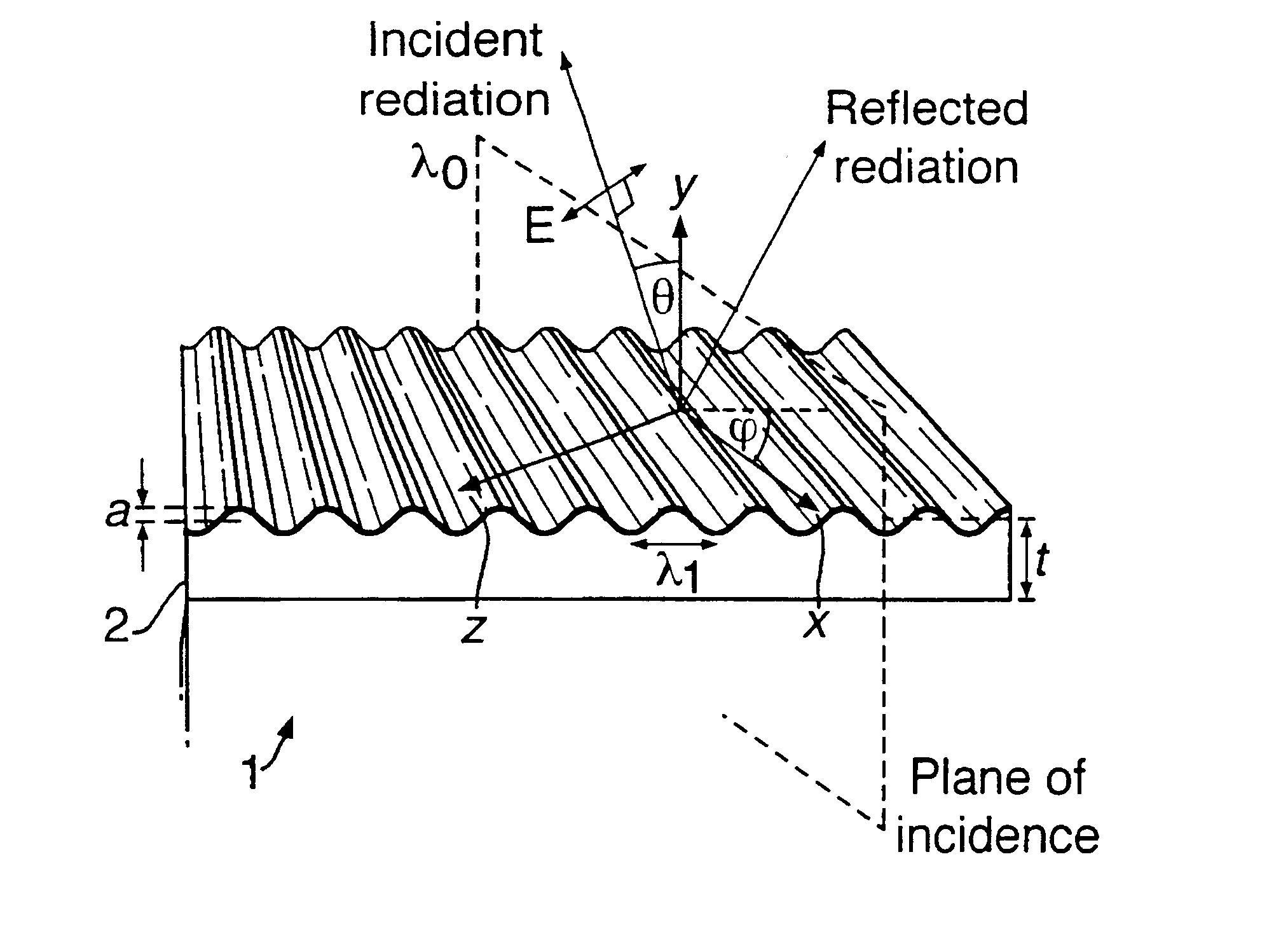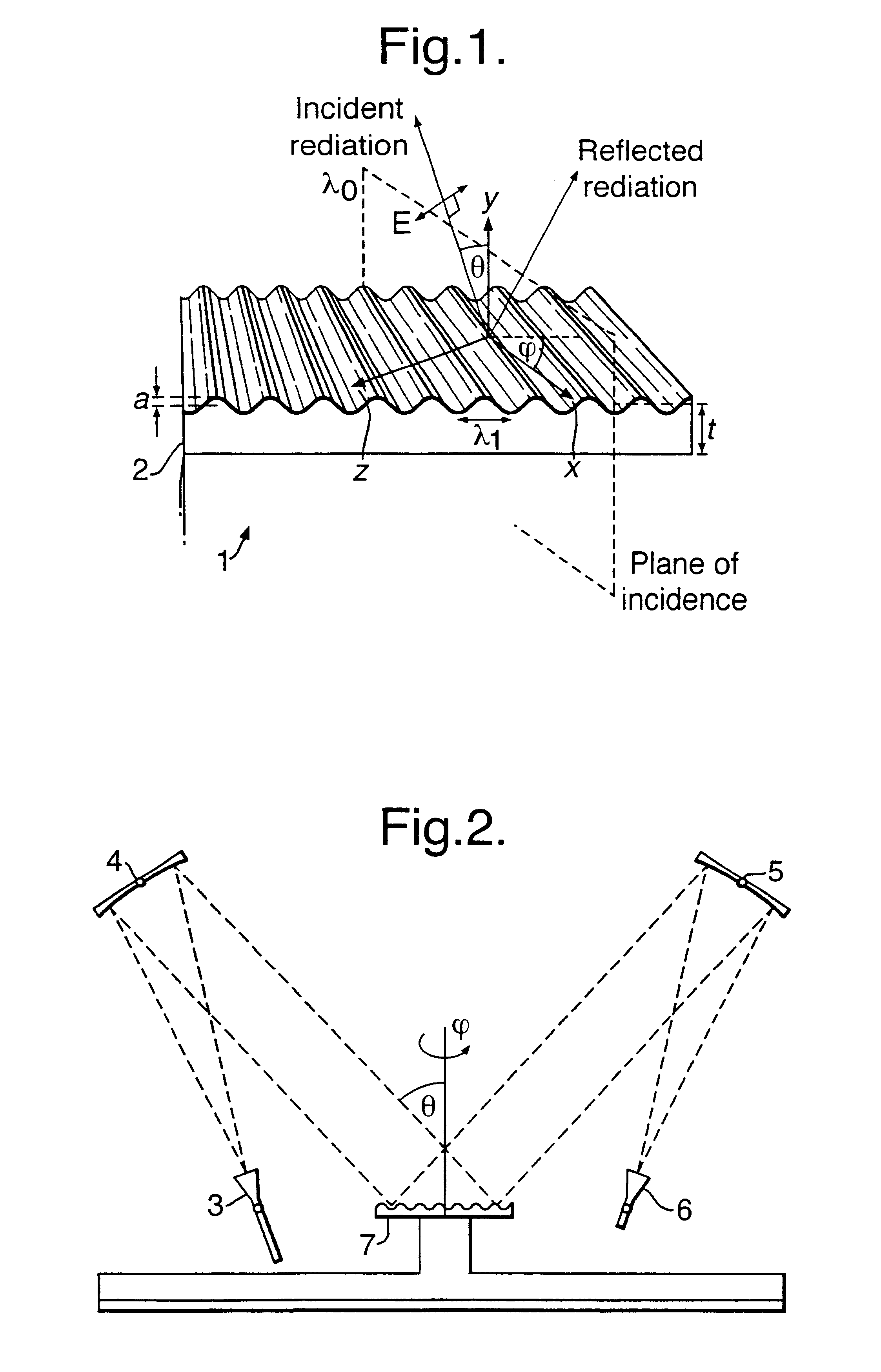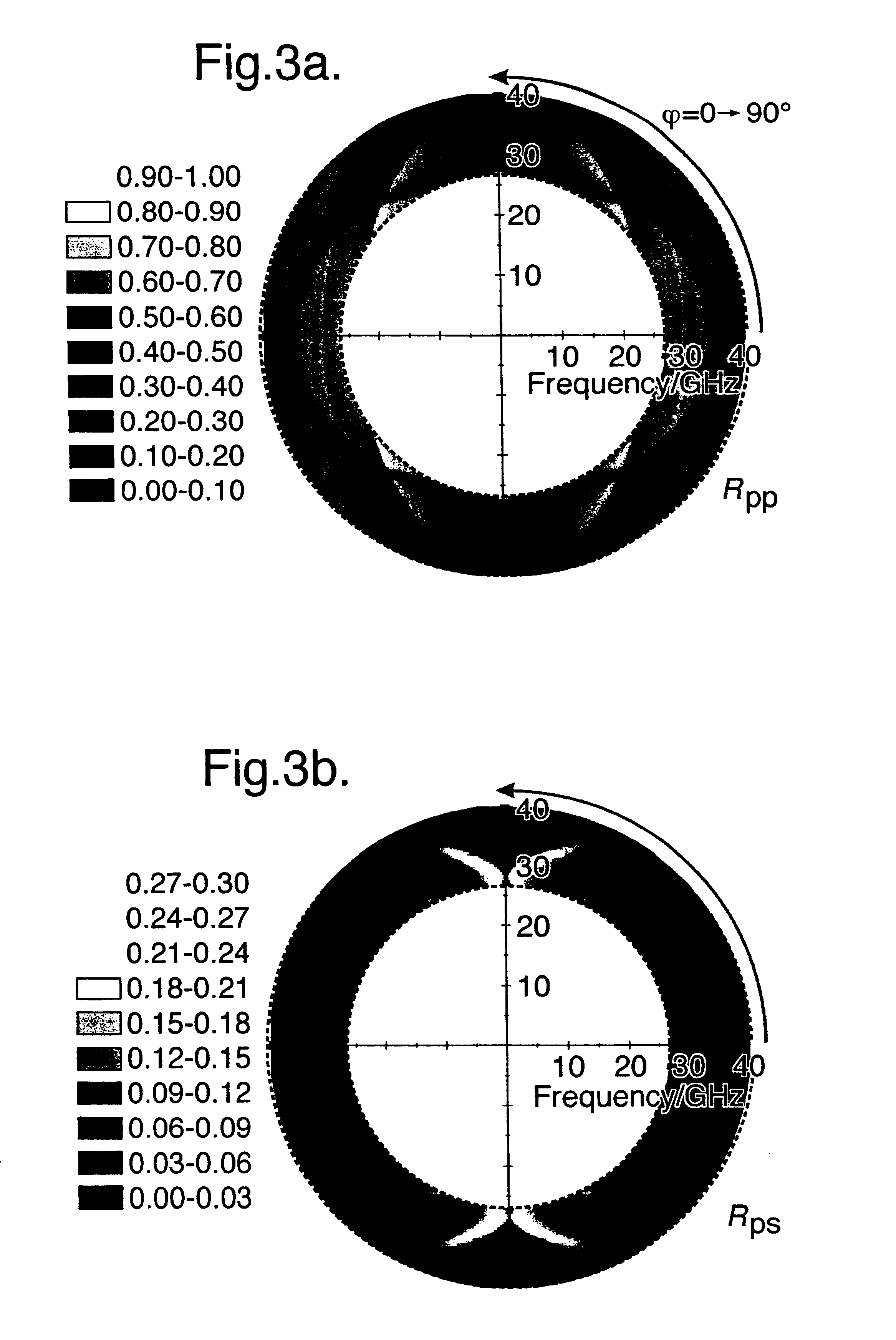Low frequency electromagnetic absorption surface
a technology of electromagnetic absorption and low frequency, applied in the direction of magnetic/electric field screening, electrical equipment, and space probes, etc., can solve the problems of complex profiles that cannot be easily made on metal layers, plasmons cannot be converted back to photons for re-emission, and are far heavier than electric absorbers. , to achieve the effect of simple fabrication
- Summary
- Abstract
- Description
- Claims
- Application Information
AI Technical Summary
Benefits of technology
Problems solved by technology
Method used
Image
Examples
Embodiment Construction
FIG. 1 shows the substrate 1 having a dielectric layer of petroleum wax 2 with a profiled surface. This profile is corrugated (sinusoidal) and having pitch p, amplitude a, and dielectric thickness t. The sinusoidal top interface profile A(x)=a cos 2.PI.x / .lambda.g, where t.apprxeq.2.6 mm, a .apprxeq.1.5 mm and .lambda.g.apprxeq.15 mm.
The sample is prepared by filling a metallic, square tray of side approximately 400 mm and depth 5 mm with hot wax and allowing it to cool. A metallic "comb" of the desired sinusoidal interface profile is manufactured using a computer-aided design and manufacture technique. It is used to remove unwanted wax from the sample by carefully dragging it across the surface until the required grating profile is obtained.
FIG. 2 shows an arrangement used to record reflectivity from the sample. A transmitting horn 3 is placed at the focus of a 2 m focal length mirror 4 to collimate the beam therefrom. A second mirror 5 is positioned to collect the specularly refle...
PUM
 Login to View More
Login to View More Abstract
Description
Claims
Application Information
 Login to View More
Login to View More - R&D
- Intellectual Property
- Life Sciences
- Materials
- Tech Scout
- Unparalleled Data Quality
- Higher Quality Content
- 60% Fewer Hallucinations
Browse by: Latest US Patents, China's latest patents, Technical Efficacy Thesaurus, Application Domain, Technology Topic, Popular Technical Reports.
© 2025 PatSnap. All rights reserved.Legal|Privacy policy|Modern Slavery Act Transparency Statement|Sitemap|About US| Contact US: help@patsnap.com



